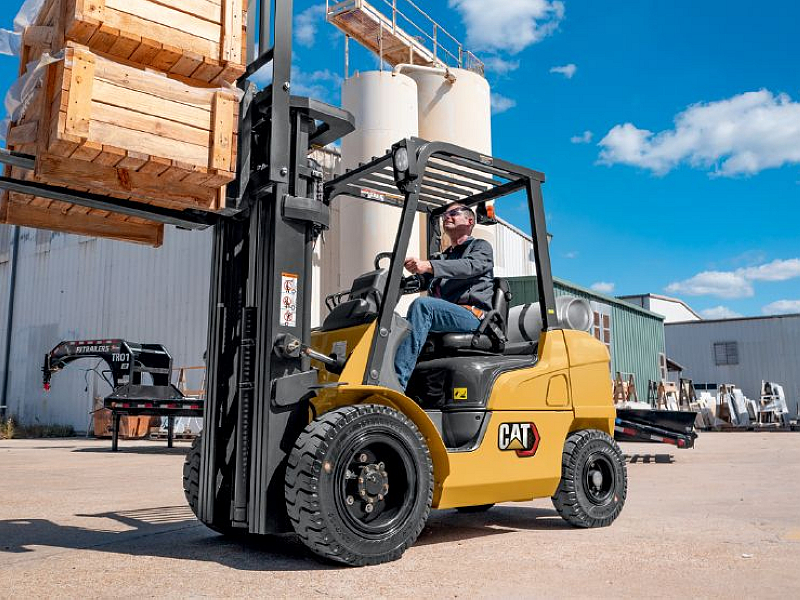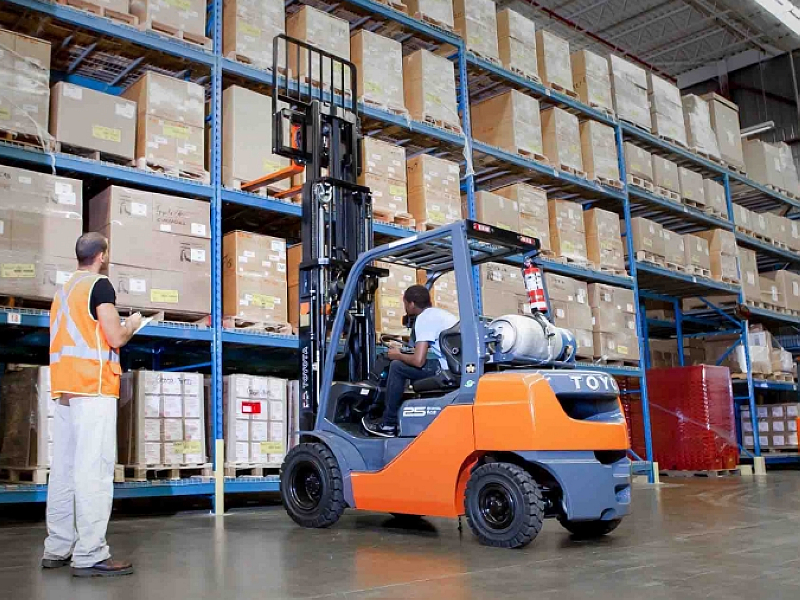Damaged pallets can be called the
“invisible killer” in the production process, which not only lowers
productivity and increases operating costs, but also is usually associated with
improper forklift operation. Over time, pallets and their repair costs continue
to rise, and profit margins are gradually squeezed. Although there are various
forms of pallet damage, forklift operator error is undoubtedly the most common
cause.
In line with the development of industry
standards, most of the pallet damage problems can be properly resolved by
standardizing forklift operation procedures and strengthening employee
training. The following suggestions to reduce pallet damage are worth referring
to.

1. Slow down
Reducing speed is a key to reducing the
risk of forklift damage and is the cornerstone of many techniques. Reducing
speed buys the forklift operator more reaction time to handle the pallet more
properly, avoiding mistakes such as short forks and improperly set tine
spacing. In addition, slowing down prevents collisions between the gantry,
tines or other parts of the lift and the pallet and its load. Reduce hasty
operation, gentle use of forklifts, but also to extend the service life of the
forklift itself, can be said to be a multi-purpose.
2. Accurate Pallet Selection
Pallet capacity is affected by a number of
factors, and even small differences in materials, dimensions and structural
layout can result in very different load carrying capacities. Overloaded or
incorrectly selected pallets are susceptible to breakage, cracking or
splintering, especially if the forklift is not operated properly.
Weight distribution is also a key
consideration in choosing the right pallet. Even if a pallet carries the
correct amount of weight, if it is not evenly distributed, its performance will
be affected. Uneven weight distribution can cause the pallet to be stressed in
a direction it was not designed for, which can lead to failure. The Pallet
Design System (PDS) ensures that the pallet is loaded correctly and performs as
intended.
3. Complete fork removal before turning
Damage to the longitudinal beam is a very
destructive type of damage to a pallet. Longitudinal beams are the key
component that holds the pallet in place, and when they fail, the capacity of
the pallet is dramatically reduced. This type of damage usually occurs when the
forklift driver releases the load too early and turns, causing the fork tines
to impact the longitudinal beam, resulting in strain and damage. Therefore,
forklift drivers must make sure that the tines are completely withdrawn from
the pallet before turning.
4. Refuse to tow and operate in a
standardized manner
“Towing” a pallet, i.e. pushing the pallet to slide along the ground,
is not a desirable behavior. The pallet is not designed to be pushed along the
ground, and forced dragging will subject it to undue lateral stresses and
damage its load-bearing capacity. Also, dragging can cause physical damage to
the pallet components, weakening them and increasing the risk of failure.
5. Eliminate the use of short-forked
pallets
Short-forking means that the forklift tines
are not fully inserted into the pallet before lifting the load. Ensure that the
front of the forklift truck door frame is as close to the pallet and load as
possible and that the end of the pallet rests on the tips of the tines. The
pallet is designed to support the weight of the load, which requires the tines
to be fully inserted. Incomplete insertion of the fork tines can put additional
stress on the pallet deck and nails, increasing the likelihood of pallet failure
or damage. In addition, pallets are more likely to slip and fall when
short-forked, especially during rushed operations.
6. Proper Use of Pallet Spacers
Fork tines should be inserted easily and
evenly into the pallet and should not come in contact with any part of the
pallet until the load is lifted. If the spacing is not set correctly, the fork
tines may strike the longitudinal beams, causing damage and affecting the
performance of the pallet. Ensuring that the tines do not interfere with
intermediate or external pallet supports will extend the life of the pallet. It
is also a good idea to use pallets with beveled beams to guide the tines into
the pallet.
7. Spread the Forks Early to Spread the
Load
Before lifting a pallet, the forklift tines
should be placed as far apart as possible to spread the load. If the forklift
is equipped with automatic fork tine spacing adjustment (such as pitch forks),
the fork tines can be spread after they enter the pallet; if manual adjustment
is required, it should be completed before entering the pallet. Proper fork
tine spacing will stabilize the pallet and load and reduce the amount of stress
placed on the pallet.

Following these practical tips can effectively reduce the damage rate of forklift pallets, save costs for enterprises, improve efficiency, and help enterprises move forward steadily in the fierce market competition.